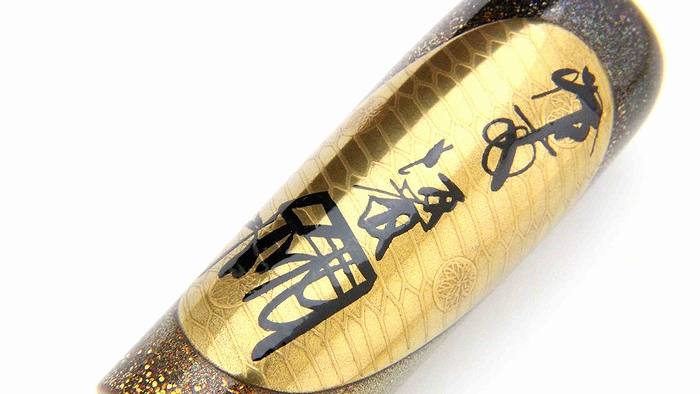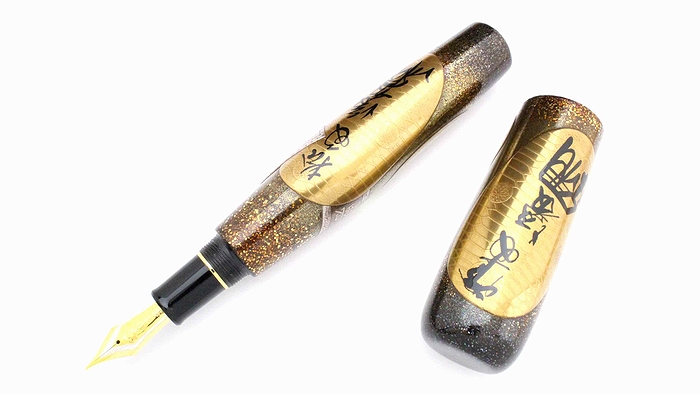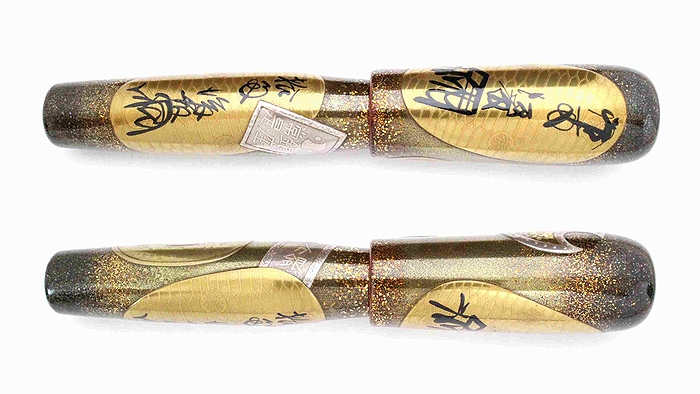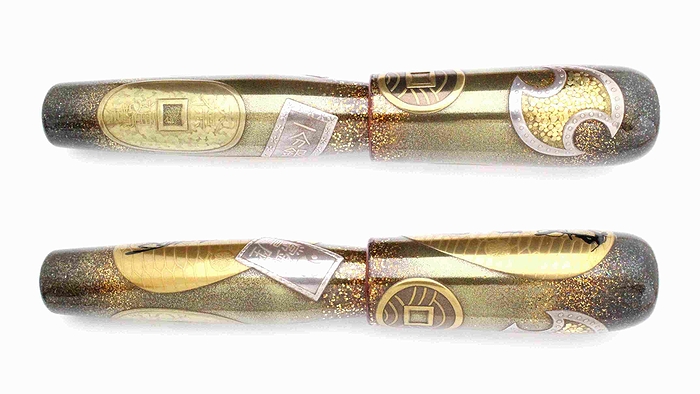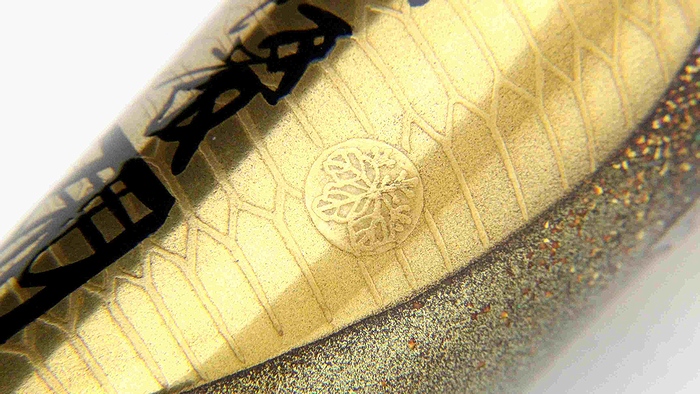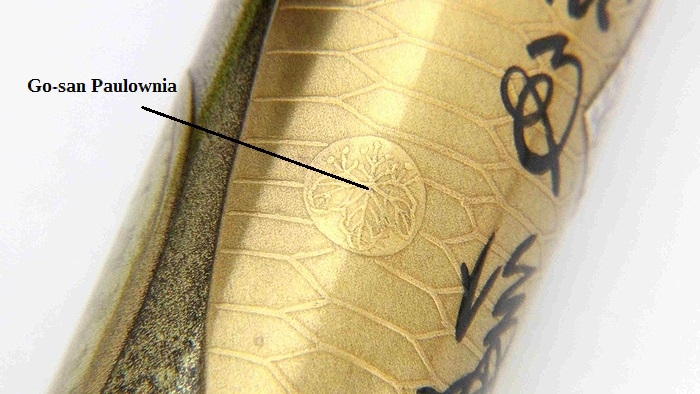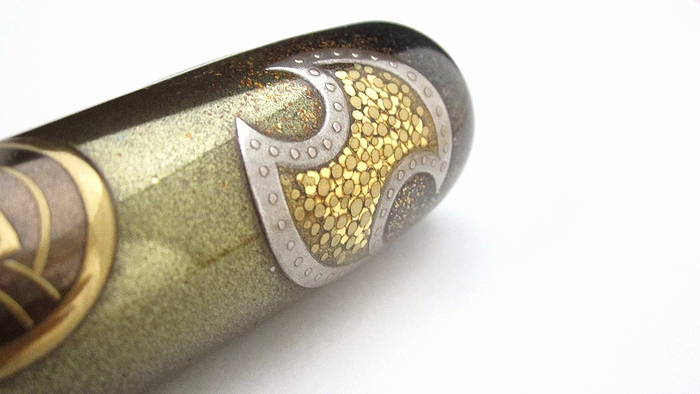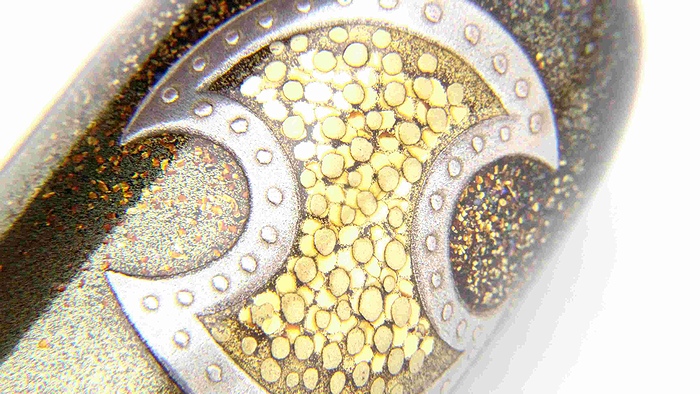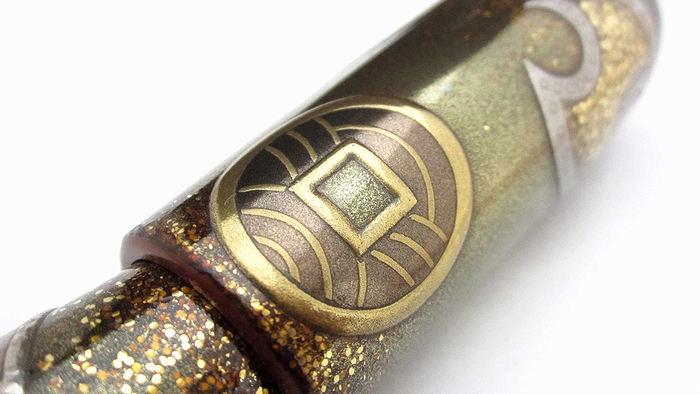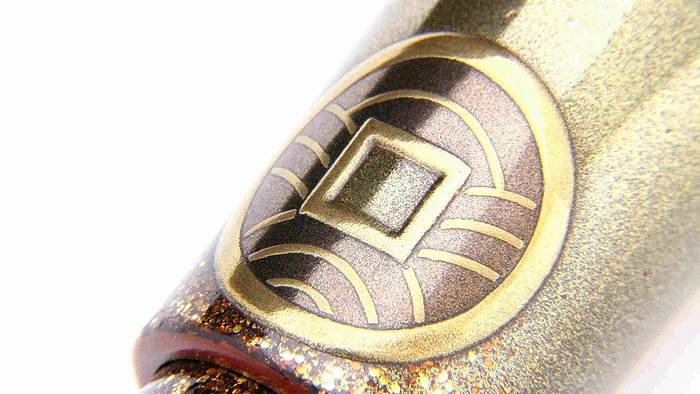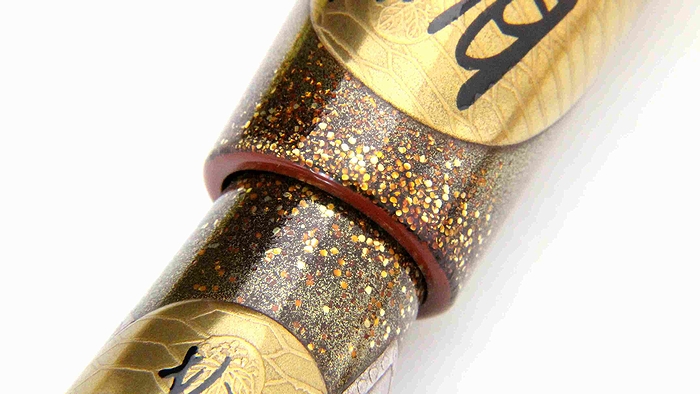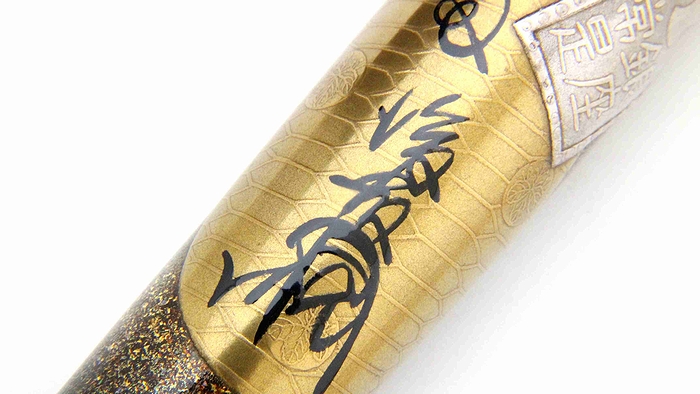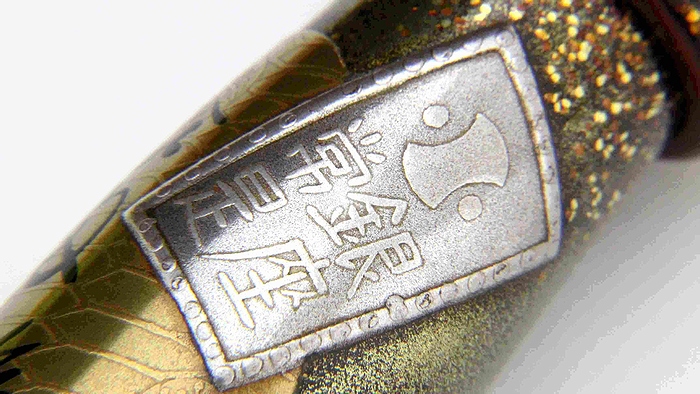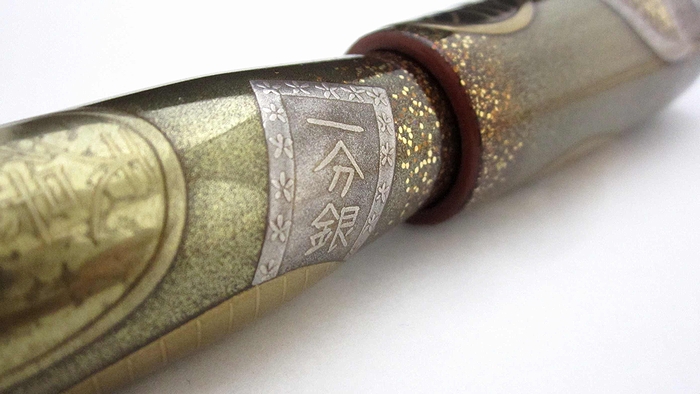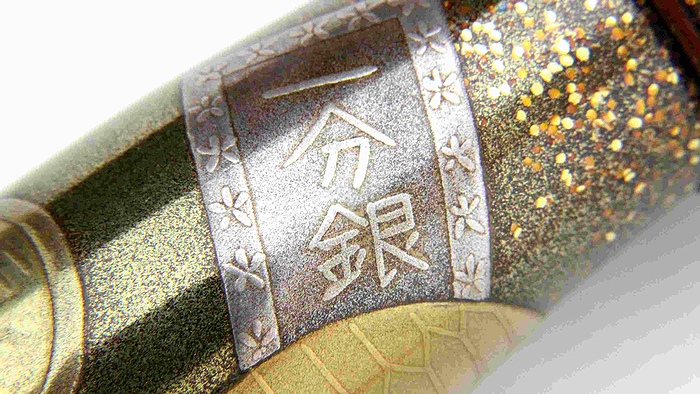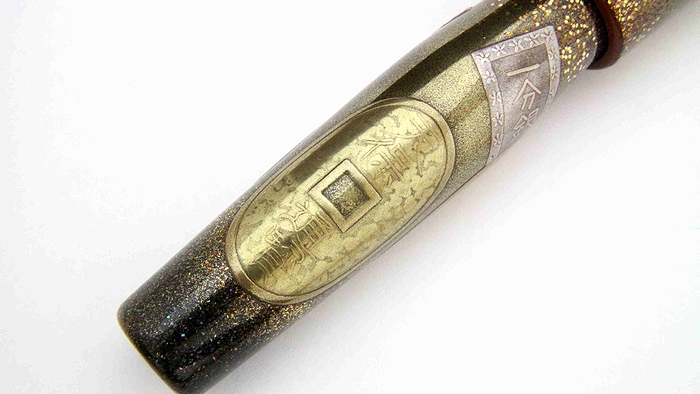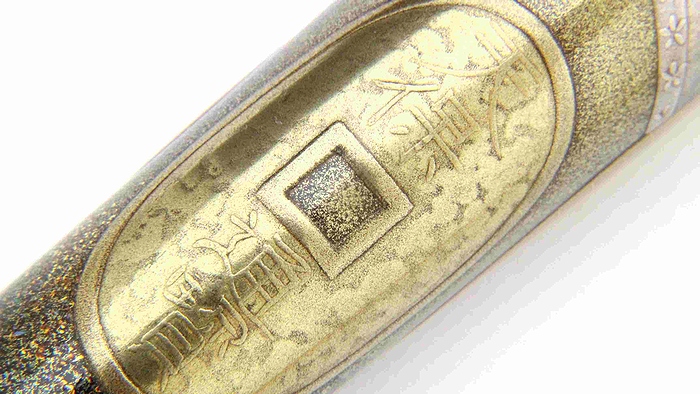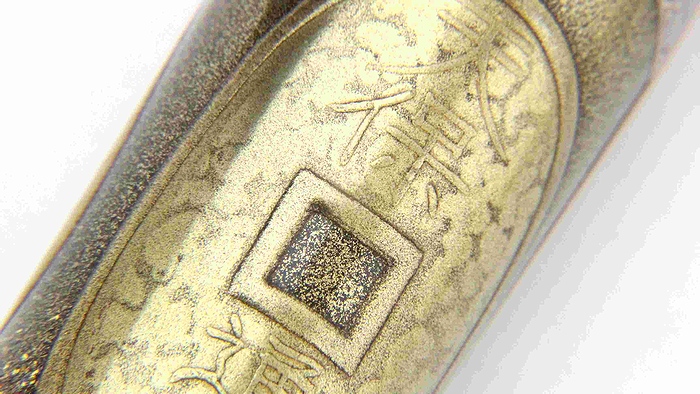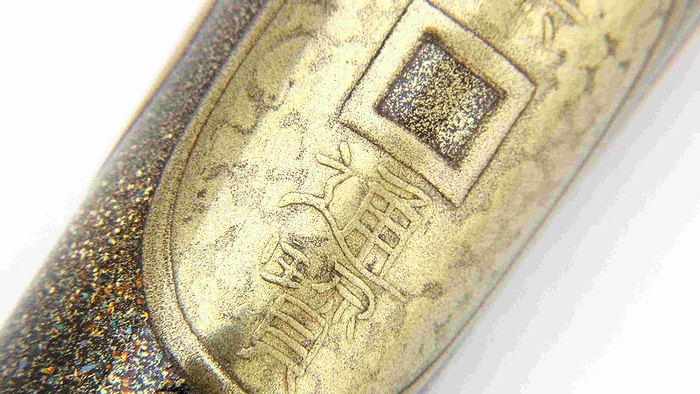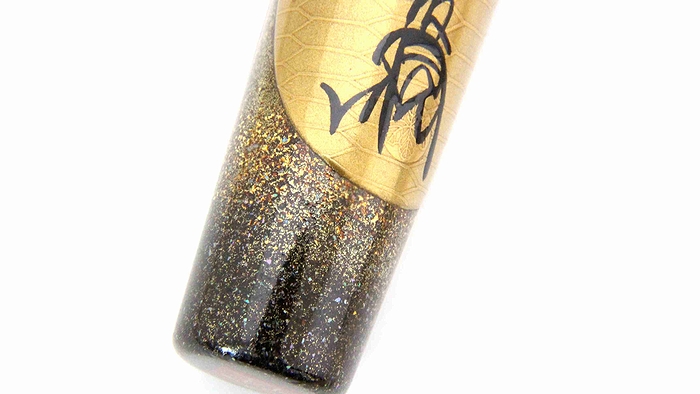AGJ Original Maki-e Fountain pen #53 "Koban (Japanese old coin)" Sailor King of Pen KOP Sparkling Togidashi Taka Maki-e Kyoto Japan Wa
AGJ Original Maki-e Fountain pen #53 "Koban (Japanese old coin)" Sailor King of Pen KOP Sparkling Togidashi Taka Maki-e Kyoto Japan Wa
Our Selling Price: US$5,000.00(tax excluded)
Item Description
This AGJ original Maki-e Fountain pen is made by famous Kyoto Maki-e Artisan "Daikai".
This design is an AGJ's original. You can not find anywhere else.
Kyoto Maki-e is the best known Maki-e technique in Japan.
This is original Maki-e fountain pen based on Sailor fountain pen, King of Pen.
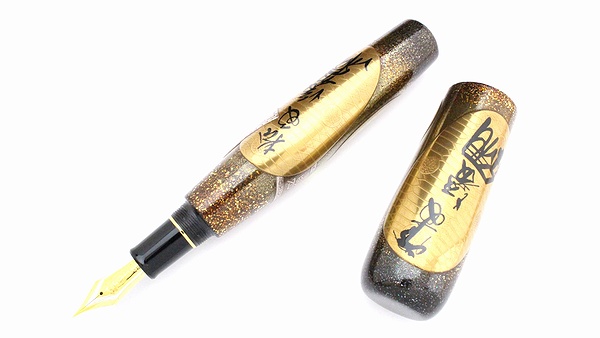
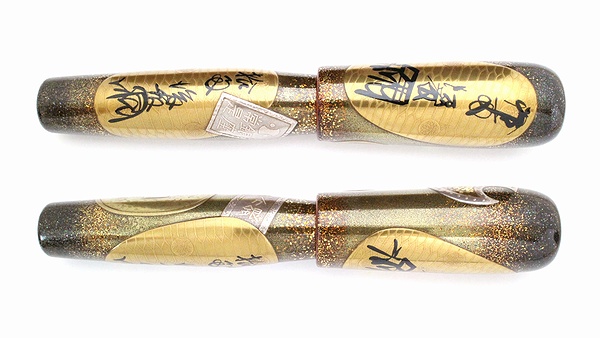
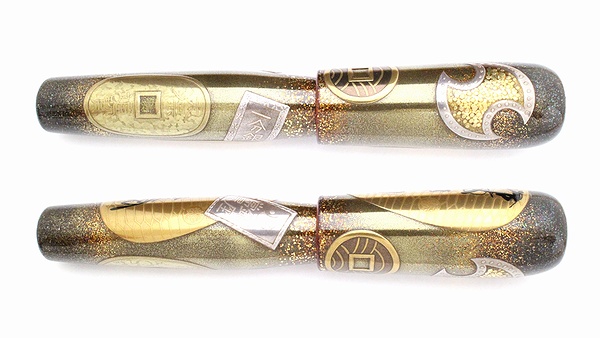
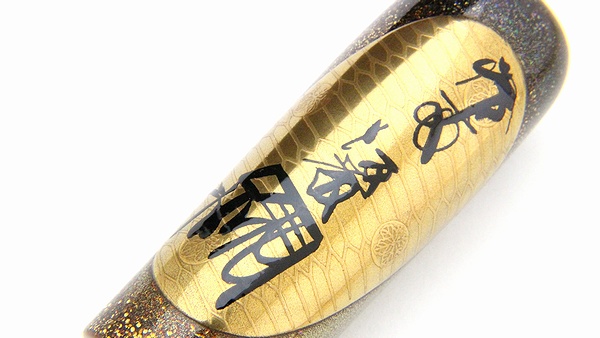
Kyoho Koban (Japanese old coin): Tsuke-gaki Makie
Raised by sprinkling silver powder twice and coating white urushi lacquer three times
Kyoho big size Koban (Japanese old coin) made by Gold in early 1700s
These characters in India ink say "Jyuryo issued by Goto"
Jyuryo(Ten Ryo): Old Japanese monetary unit
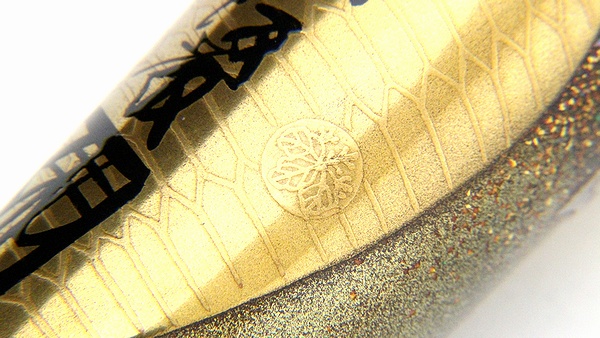
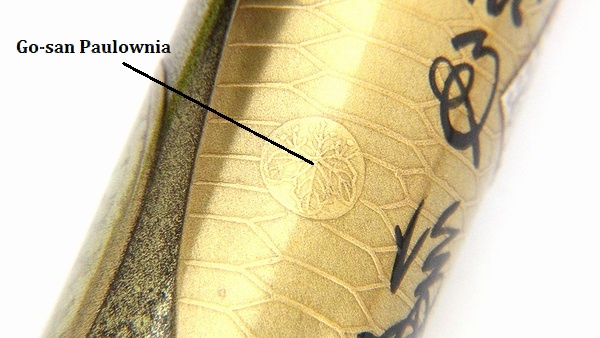
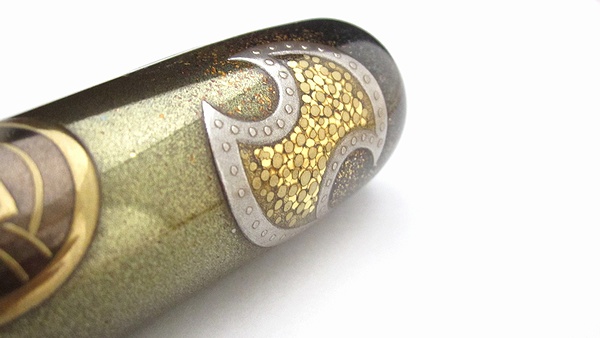
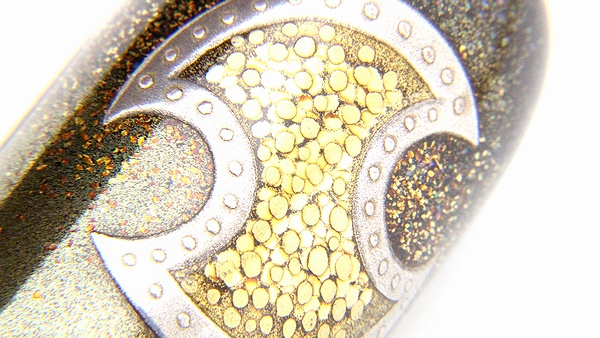
Kan-ei Tsuho(Japanese old coin):
Bring up with Silver powder and Urushi twice, then sprinkling alloy(Gold and Copper) powder
Waves and borders: Sprinkle Gold powder after bringing up by silver powder and urushi on the background
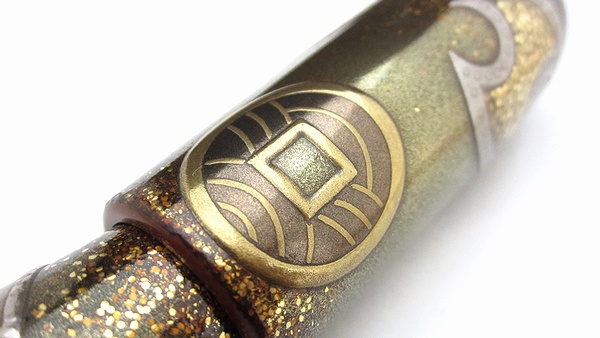
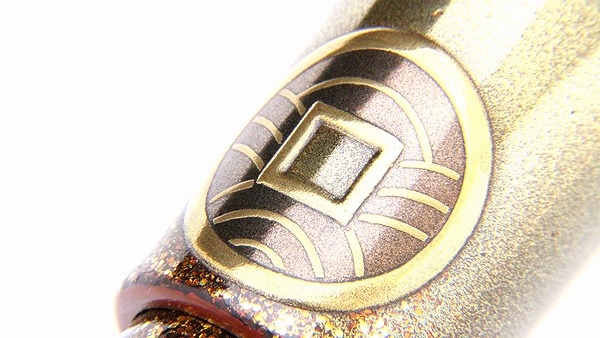
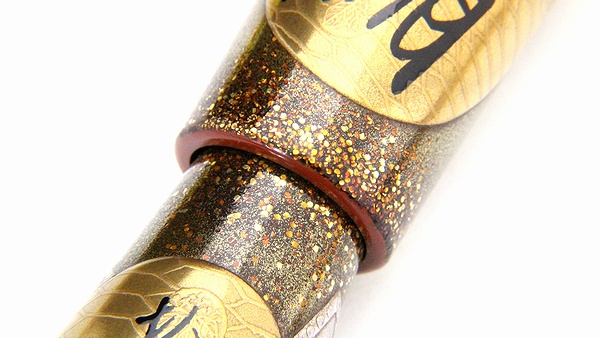
Tensho Koban(Japanese old coin): Tsuke-gaki Makie
Gold powder
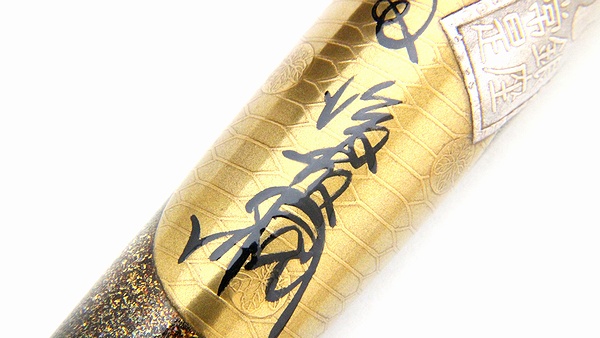
Go-san Paulownia(One of the Family crests):
Sprinkle silver powder and coat urushi on it twice
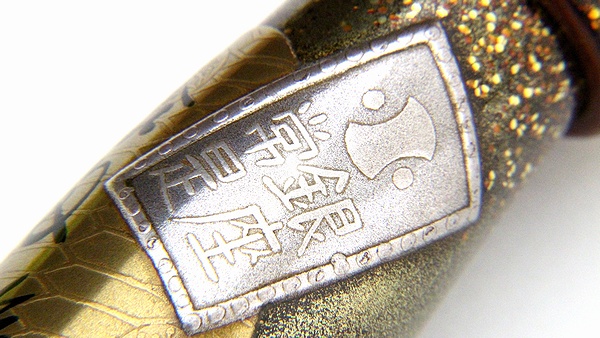
Bunsei Nanryo silver coin[1820-30 A.C.]:
Sprinkle silver powder and coat it, then do the same thing twice
Then, burnish and polish it
The characters are used Silver powder
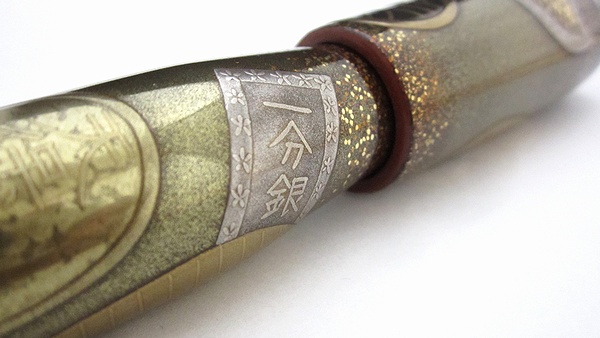
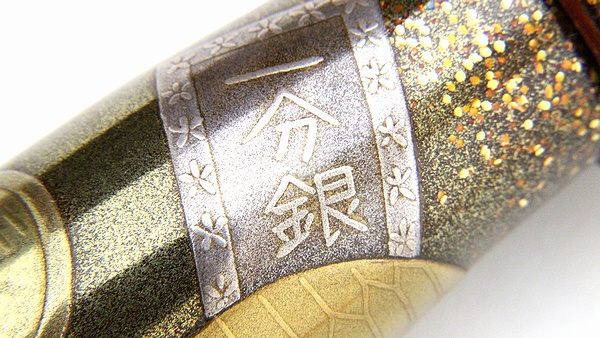
Ichibu-Gin (Japanese old silver coin): Tsuke-gaki Makie
Raise the whole design by sprinkling silver powder and coat urushi lacquer twice, and then make characters using silver powder
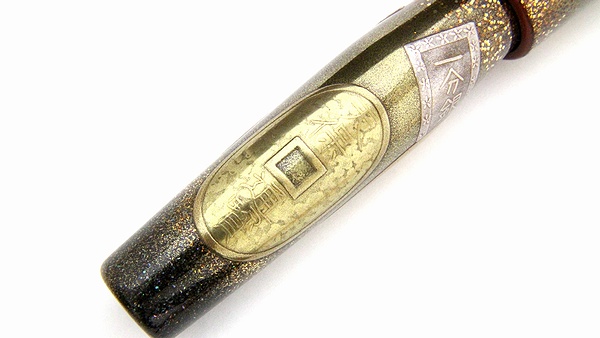
Tenpo Tsuho (Japanese old coin):
Background: Raise the whole design by sprinkling silver powder and coat urushi lacquer twice, and then the whole design is decorated with sprinkled Blue gold powder
Edges (Highest levels): burnished after bringing up with sprinkling Silver powder and coating by urushi lacquer, and sprinkling Blue gold powder on the background
Kanji characters(Tenpo Tsuho): Blue gold powder
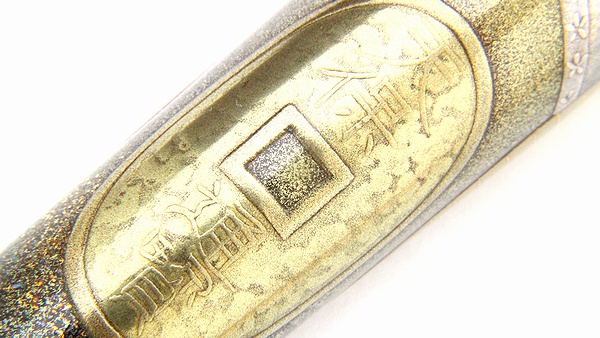
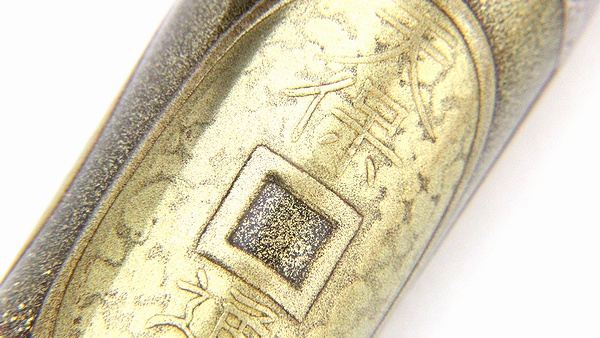
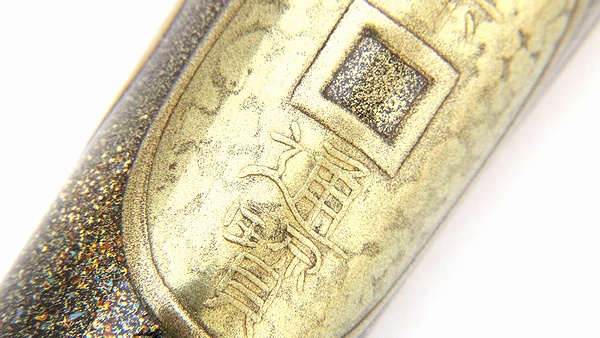
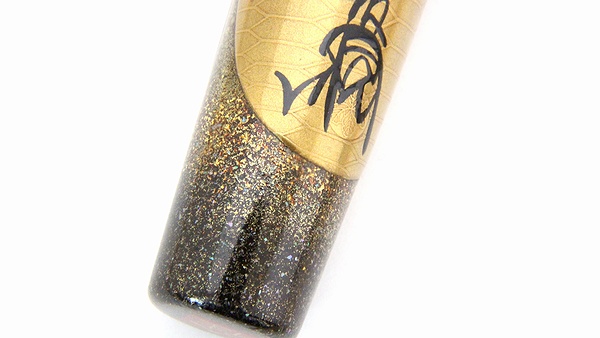
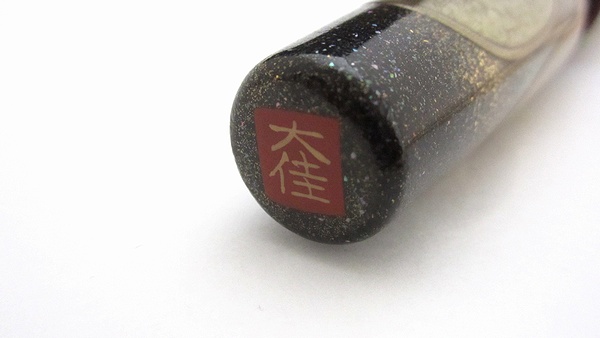
This design is an AGJ's original. You can not find anywhere else.
Kyoto Maki-e is the best known Maki-e technique in Japan.
This is original Maki-e fountain pen based on Sailor fountain pen, King of Pen.




Kyoho Koban (Japanese old coin): Tsuke-gaki Makie
Raised by sprinkling silver powder twice and coating white urushi lacquer three times
Kyoho big size Koban (Japanese old coin) made by Gold in early 1700s
These characters in India ink say "Jyuryo issued by Goto"
Jyuryo(Ten Ryo): Old Japanese monetary unit




Kan-ei Tsuho(Japanese old coin):
Bring up with Silver powder and Urushi twice, then sprinkling alloy(Gold and Copper) powder
Waves and borders: Sprinkle Gold powder after bringing up by silver powder and urushi on the background



Tensho Koban(Japanese old coin): Tsuke-gaki Makie
Gold powder

Go-san Paulownia(One of the Family crests):
Sprinkle silver powder and coat urushi on it twice

Bunsei Nanryo silver coin[1820-30 A.C.]:
Sprinkle silver powder and coat it, then do the same thing twice
Then, burnish and polish it
The characters are used Silver powder


Ichibu-Gin (Japanese old silver coin): Tsuke-gaki Makie
Raise the whole design by sprinkling silver powder and coat urushi lacquer twice, and then make characters using silver powder

Tenpo Tsuho (Japanese old coin):
Background: Raise the whole design by sprinkling silver powder and coat urushi lacquer twice, and then the whole design is decorated with sprinkled Blue gold powder
Edges (Highest levels): burnished after bringing up with sprinkling Silver powder and coating by urushi lacquer, and sprinkling Blue gold powder on the background
Kanji characters(Tenpo Tsuho): Blue gold powder





[What is Maki-e technique?]
-
Hira Maki-e
- Urushi lacquer
- Sprinkle Gold powder, Seikin: Alloy of Gold, Silver powder, Hirame and so on
- Coated by Uwazuri and Black urushi
- Polish by polishing and grindstone powders
-
Togidashi Maki-e (Mainly used for finishing evenly the background)
- Urushi lacquer
- Sprinkle Gold powder, Seikin: Alloy of Gold, Silver powder, Hirame and so on
- Coated thickly by Nashiji and Black urushi
- Burnished the urushi lacquer by charcoal
- Polish by polishing and grindstone powders
- When coarse gold/silver/Hirame/Seikin powders are sprinkled, put a luster by burnished.
- After togidashi maki-e, Togidashi Hira maki-e is decorated Hira maki-e on togidashi maki-e.
- After togidashi maki-e, Togidashi Taka maki-e is decorated Taka maki-e on togidashi maki-e.
- Burnishing is needed when coarse powders are sprinkled.
-
Taka Maki-e
- The design is created using urushi lacquer
- Sprinkle charcoal/Silver powders to raise the layer
- Dry
- Spread urushi twice to make the layer thicker
- Sprinkle gold/silver/Hirame/Seikin powders
- Coat by Urushi
- Burnish
- Polish
- Charcoal powder: Show a soft feeling
- Silver powder: Feel solid
-
Tsukegaki Maki-e
- Spread Urushi lacquer thickly
- Sprinkle gold powder
- Gold powders sink due to thick urushi
- Do Togidashi
- Gold powders shine
- Polish
[Description]
| Name: | Koban (Japanese old coin) #53 |
| Maki-e Artist: | Daikai |
| Technique: | Togidashi Taka Maki-e |
| Origin: | Kyoto, Japan |
| Nib: | Bicolor 21K Gold |
| Nib size: | Medium (If you prefer a broad nib, please let us know.) |
| Size: | 30mm(Dia.) x 175mm |
| weight: | 113g |
| Shipping: | FREE SHIPPING! |
| Others: | AGJ Original Design Maki-e |
[Daikai's Career]
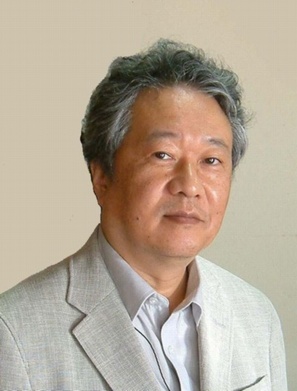
| Year 1950 | Born in Kyoto His father, uncle, grand father and grand-grand father were Urushi Lacquer masters too. |
| 1969 | Another Urushi artist "Masakichi Shima" started teaching Daikai. |
| 1976 | Daikai began succeeding to inherit the style of Kyoto Makie (Maki-e). |
| 1985 | Won the Kyoto Chamber of Commerce Award at Kyoto Lacquerware exhibition. |
| 1986 | Held Urushi Lacquer exhibition at Kyoto Takashimaya (the largest department store in Japan). |
| 1990 | Exhibited at the Arts and Crafts in kyoto. |
| 1991 | Became a technical lecturer for the artists at the traditional industry at Kyoto. |
| 1994 | Opened his Kyoto Urushi lacquer school. |
| 1995 | Invited to display his works at INFA 1995 in Hannover, Germany. |
| 1997 | Won the award at the industrial techniques for the crafts in Kyoto. |
| 1999 | Held the first Kyoto Urushi lacquer school’s exhibition at Ko-dai temple, Kyoto. |
| 2001 | He has held the traditional crafts exhibition every year since 2001. |
| 2008 | Held Amber Maki-e and Lacquer works exhibition at Sogo department store. |
| 2009 | Held Kyoto Urushi Lacquer exhibition at Takashimaya in Namba, Osaka. |
He lives in Kyoto now and teaches many Maki-e artisans Kyoto-Makie technique. |
